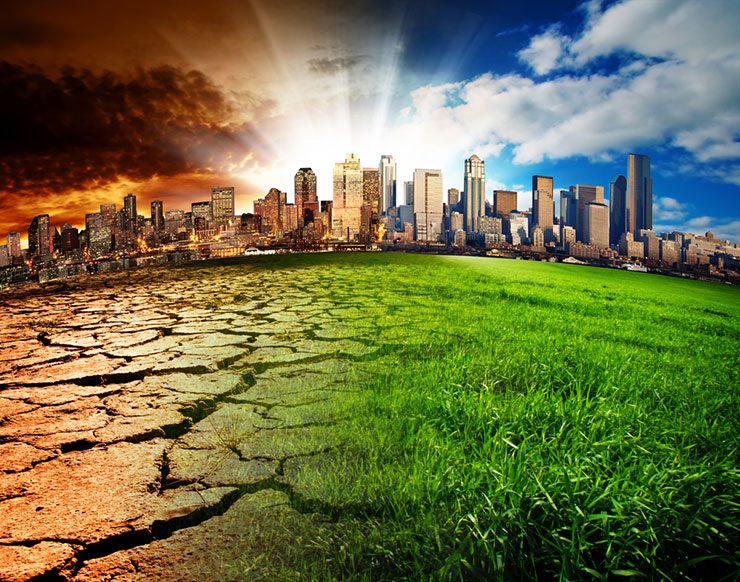You would think that the cities would be crowded with all of the transplanted humans, but the severe increase in temperature has significantly reduced the population. There is little food and all of it must be grown in buildings designed to withstand the increase of nearly 40 degrees F. While humans did finally get control of climate change in 2100, the effects on the earth were too drastic to be reversed. As the temperatures climbed, droughts and fires became more common, decreasing the world's food supply and continuing to contribute to carbon levels in the atmosphere. Skin cancer is now the #1 cause of death due in no small part to the reduction in cloud cover caused by the rising temperatures. UV rays are 5 times stronger today than they were in 2019.
There were many attempts to curb the global warming that has now hit catastrophic levels. First, the race to convert over to electric cars heated up in the late 21st century due to extreme climate pressures. Unfortunately, we had not completely figured out how to power all of the clean systems that were now in use, so fossil fuels were still indirectly a large portion of the energy generation until around 2150. At that point, techniques were developed to recapture carbon in the atmosphere, but temperatures were already spiraling out of control. With our atmosphere compromised, little could be done to stop continued global warming, so focus was put on allowing humans to survive in the changing environment.
Scientists now believe that another ice age may begin to take shape over the next 1,000 years, dropping the average temperatures back to what we would consider normal for 2019.

No comments:
Post a Comment